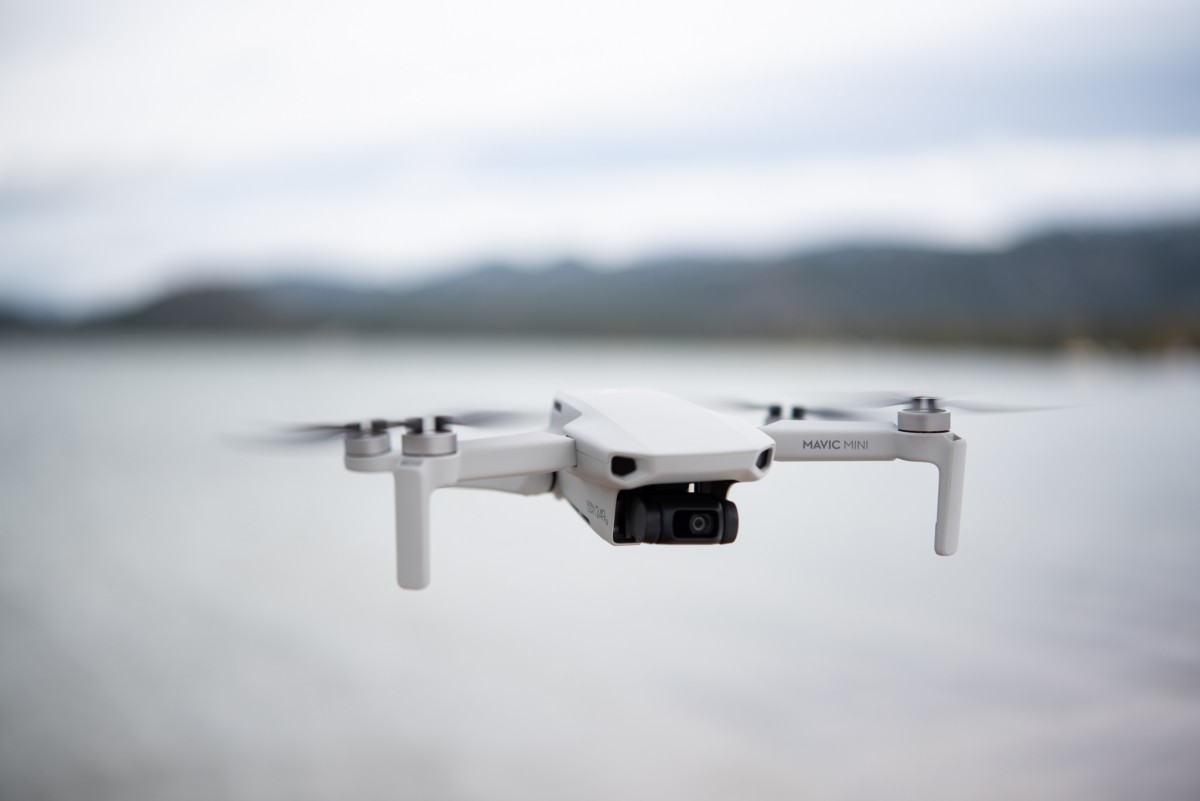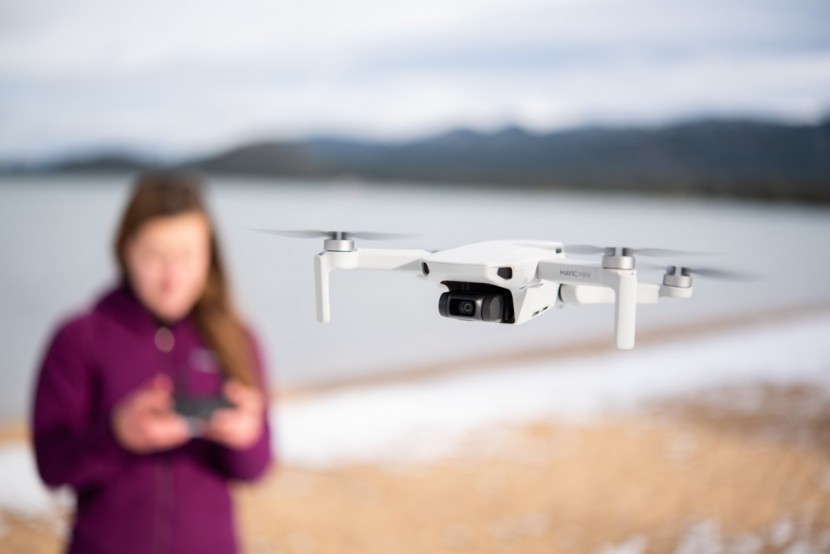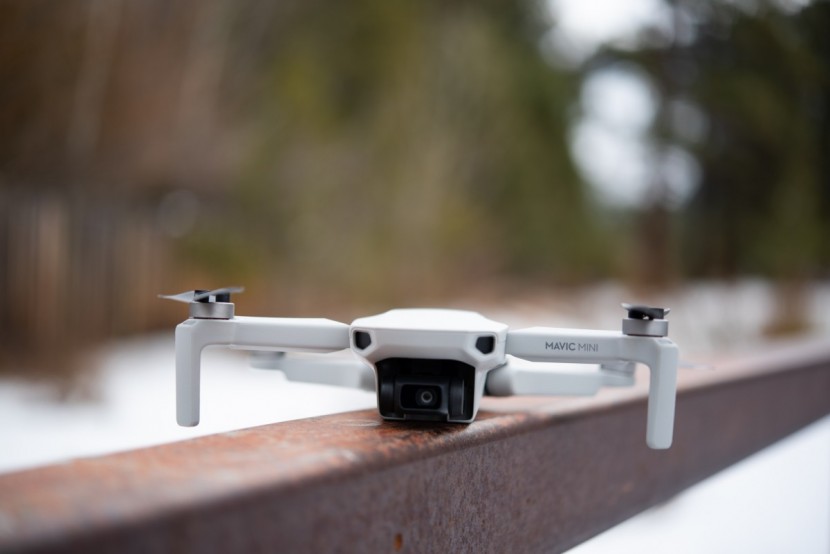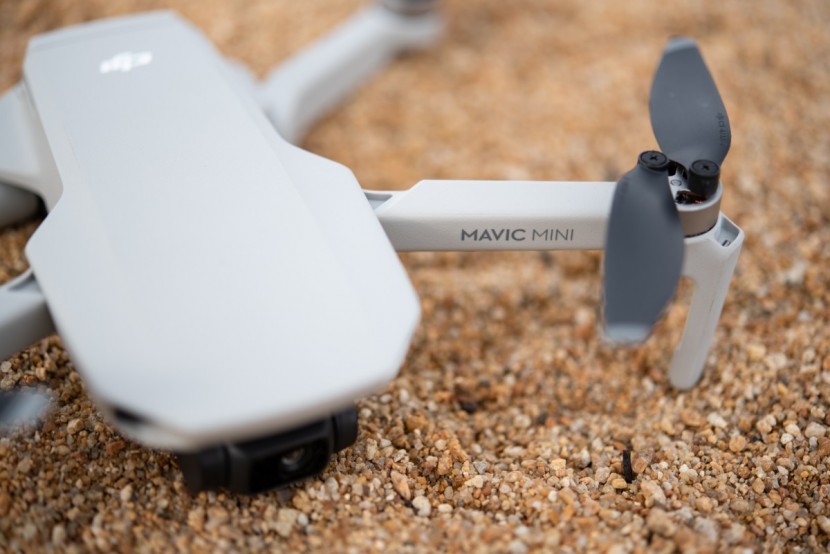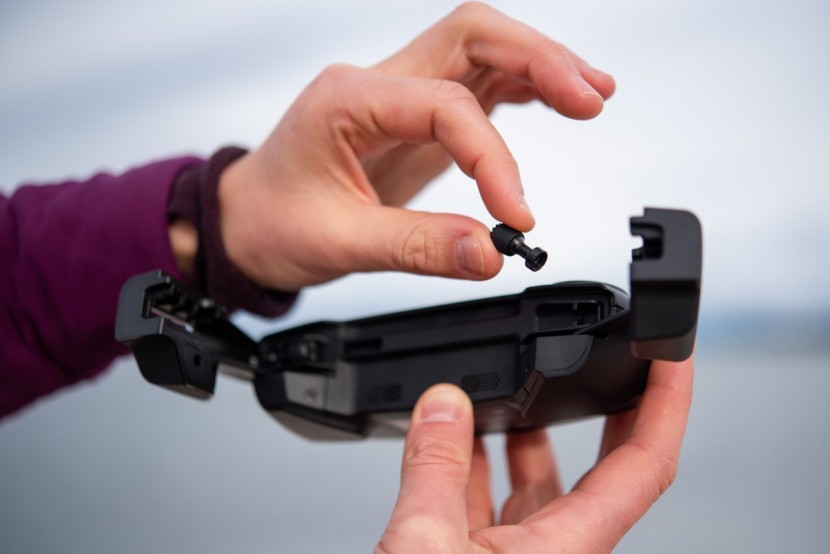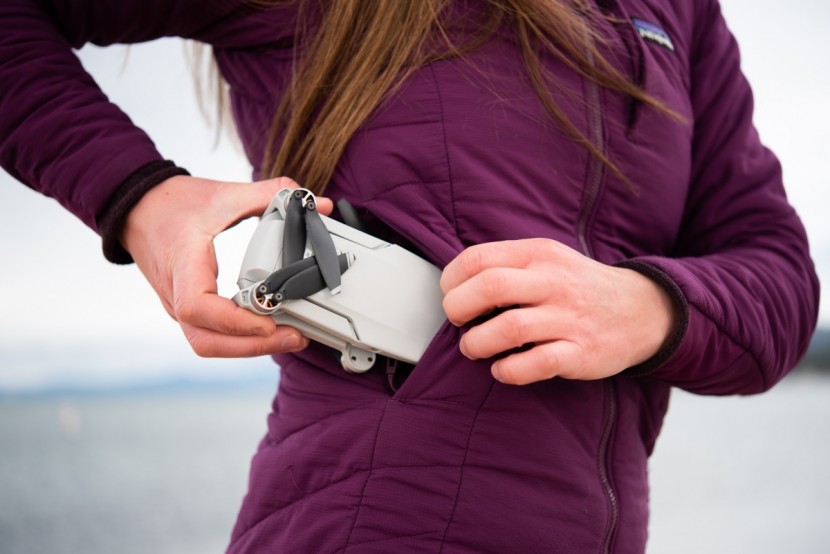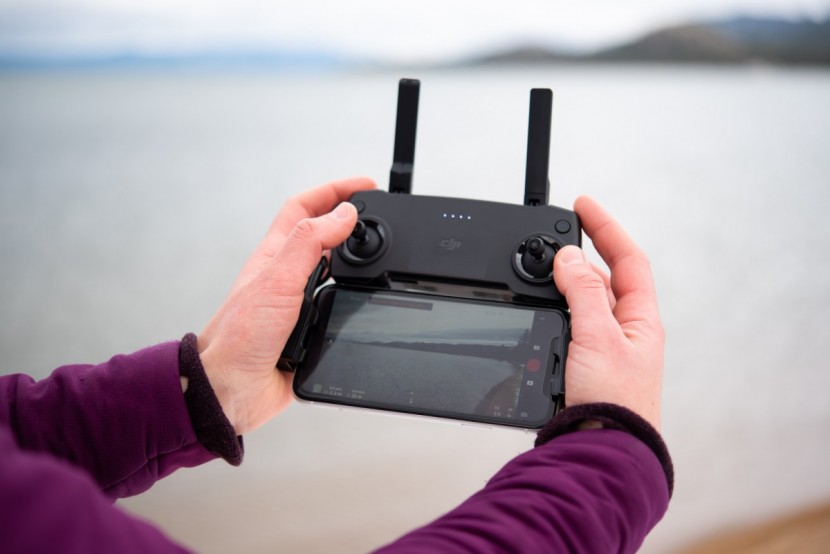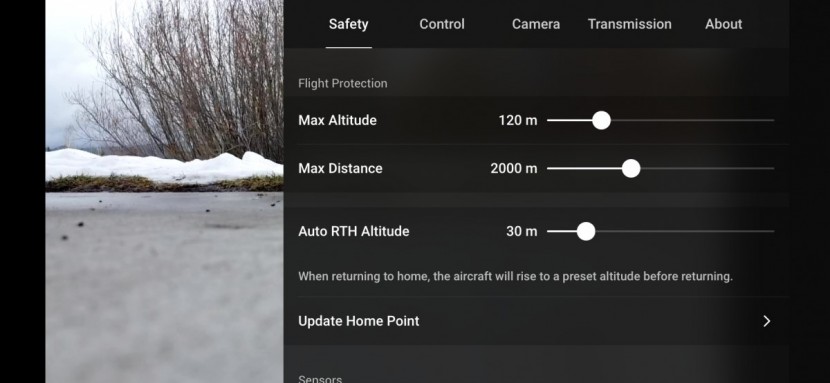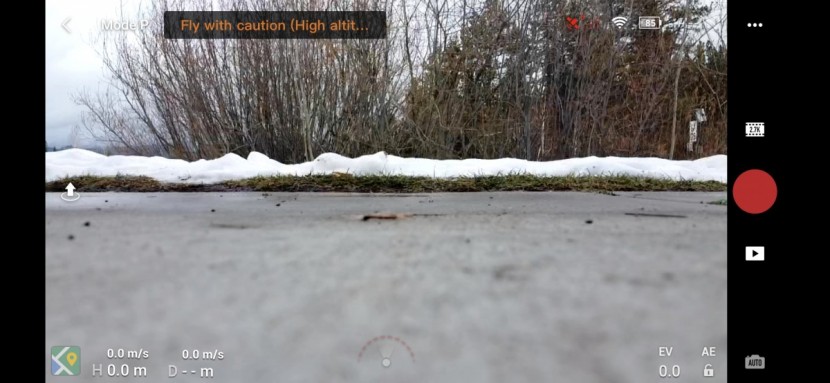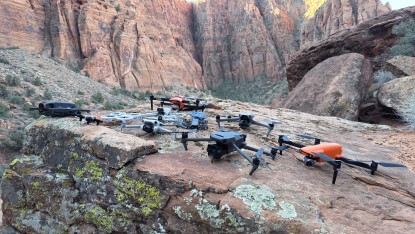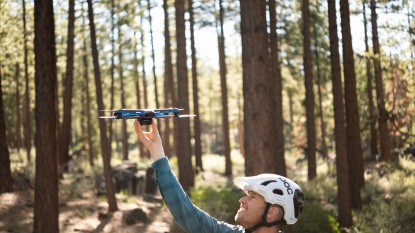
Our Verdict
Our Analysis and Test Results
The DJI Mavic Mini is one of the best beginner drones around thanks to the impressive video quality, long flight time, and intuitive user experience it is able to offer at a relatively reasonable price. Perhaps most importantly, it is one of the few capable camera drones that is small and portable enough to make it into your everyday bag.
Video Quality
The Mavic Mini renders a good looking picture, especially considering its small stature. We think its 2.7K resolution and relatively solid color composition will please the vast majority of consumer pilots, though some serious hobbyists may wish its camera were a bit more powerful.
On average, we think the Mini's footage looks okay, and under ideal conditions it can look good. For this camera “ideal conditions” would be a fairly muted scene with narrow dynamic range, think a rocky or grassy landscape with overcast skies. In this situation, the camera is able to create good color accuracy with great clarity. If that dynamic range gets a bit wider --say a field of dark green grass with snow capped mountains in the background, or a deep blue lake adorned with a bright white boat-- the weaknesses of this camera's relatively small sensor become clear. In these instances we found the camera to struggle with the brighter areas of the image, generally blowing them out and overexposing them. While you can't specifically set the exposure, you can make small adjustments to the exposure value (EV). Adjusting the EV down a bit generally does pull back those overexposed areas and make them look better, but also noticeably dulls the rest of the image.
A recent firmware upgrade allows you to manually control both the exposure and the white balance of the Mavic Mini's camera. This can go a long way towards fixing those overexposed areas, but DJI's higher-level drones with larger sensors do a better job overall in these more challenging lighting conditions.
Overall, we think the Mini's video quality is more than good enough for home videos that will be shared amongst friends or on social media. If you're willing to put a little effort both while shooting and in post processing, you may even be able to get footage that looks borderline fantastic. But the Mini's camera definitely falls short of the professional level quality that some of DJI's higher-level drones can produce.
The Nitty Gritty Camera Details
At its full 2.7K resolution the Mini's camera can shoot at 25 or 30 frames per second, and a new firmware upgrade adds the cinematic standard of 24 frames per second. This is fine for most purposes, but does severely limit your ability to slow footage down in the editing room if you ended up flying a bit too fast on one of your cinematic panning shots. If you drop the resolution down to 1080 HD you can shoot in 50 or 60 fps as well, giving you plenty of extra frames for slowing things down if your hands were a bit too eager on the joysticks.
In order to keep the Mini's price as impressively low as it is, DJI had to trim some other camera capabilities. For example, it can't shoot RAW photos, and you can't manually set the exposure. The latter may sound especially troubling to advanced videographers, as having a camera automatically adjust the exposure during filming can quickly downgrade a shot from stunning and theatrical to clunky and amateurish. Luckily there is an exposure lock setting, so you can make some minor EV adjustments and then lock the exposure where it is for the remainder of your flight, eliminating the chance of such a blunder.
If you switch from video to still mode, the camera allows for a bit more adjustability, with its manual setting allowing you to control the shutter speed and ISO. However, it still lacks the option of shooting in RAW, which will likely disappoint many aerial photographers.
Flight Performance
The Mini continues DJI's legacy of steady, predictable flight, offering an intuitive and fun flight experience for everyone from novices to experts. Just keep in mind that it's small and thus may struggle in strong winds, and that it lacks any sort of obstacle avoidance sensors.
General Flying Performance
We found flying the Mavic Mini to be quite a pleasant experience. You can take off and land manually if you'd like, but if that feels a bit intimidating there are also auto takeoff and landing options. Auto takeoff brings the drone off the ground and into a steady hover 4 feet directly above its takeoff point via a single tap and hold on the controller screen. Auto landing lets you bring the aircraft to a hover over where you'd like it to land and then gently bring it down to the ground with another tap and hold.
In the air the Mini stays quite stable, allowing even beginners to quickly get a hang of executing basic maneuvers. This drone is barely more than half a pound, so it doesn't have much heft when it comes to fighting against the wind. Even when it gets gusty the gimbal and software is able to keep the image looking quite steady, but those gusts can make it hard to fly the drone exactly where you'd like. You should never fly your drone out of your line of site, and if there is even a bit of wind we'd suggest keeping the Mini low and close to you.
Flight Time
DJI boasts a maximum flight time of 30 minutes on a single battery for the Mavic Mini. Based on our tests that figure is fairly accurate, though it may differ depending on your specific flight conditions.
Flight Modes
This quadcopter features three different flight modes. Point mode (denoted as a “P” in the upper left hand of the screen) is the standard mode. In this mode the drone tops out at a speed of 18 miles per hour. Sport mode (denoted by an "S") focuses more on fun flying than capturing footage, unleashing all of the battery's power to hit a top speed of 29 mph. Cinema mode (denoted with a "C") is just the opposite. It reigns in all of the drone's jitteriness, making it easier to get silky smooth footage and limiting the top speed to 9 mph.
No Obstacle Avoidance
This is perhaps the most disappointing aspect of the Mavic Mini. While we understand adding obstacle avoidance capabilities may have impacted the price or size of the drone, the lack of such a feature on a model geared and marketed towards beginners feels significant. We certainly wouldn't call it a dealbreaker based on this models' overall performance in relation to its price, but it is cause to be extra careful when flying.
Autonomous Flight Features
This is another area where DJI went bare bones, presumably to keep costs down. The Mini notably lacks any sort of automatic follow, cable cam (automatically continue in a straight line while the pilot only controls the direction of the camera), or waypoint (automatically fly between preset points) functions.
What the Mini does offer are four cinematic automatic flight functions, all of which start out with you hovering the drone in front of a subject (generally a person) and tracing that subject on the screen so that the drone can recognize it. Then, at a push of a button, the drone will fly a pattern in relation to the subject. Those patterns include flying straight up and away from the subject, straight back from the subject, in a circle around the subject, and in a widening spiral around the subject.
Portability
The Mavic Mini is about as portable as a drone that can fly for 30 minutes and take good video can currently get. The Mini does make some sacrifices to keep its price relatively low, but portability is not one of them.
The Mavic Mini weights barely more than half a pound and folds down into a rectangular package that measure only 5.5" x 3.2" x 2.3". For reference, we were able to easily fit this folded drone into purses, backpacks, large jacket pockets, and, if you don't mind resurrecting your signature 90's look, cargo pants pockets. This makes the Mini both incredibly true to its name, and the most portable of the serious camera drones on the market at the time of this writing.
The controller folds into an even tinier package, and the joysticks unscrew and store within the controller itself in order to make that package more streamlined. Unless you're really pushing boundaries in relation to the tightness of your skinny jeans, chances are the folded Mavic Mini controller will be able to easily slide into your front pocket.
Ease of Use
The Mavic Mini is certainly geared towards beginners, and it delivers an experience suited for a beginner. We think even completely novice pilots won't have any trouble getting this drone setup and in the air.
First off, the Mavic Mini tips the scales at just 249 grams, meaning is it 1 gram under the federal weight limit that requires a drone to be registered with the FAA. So no worries there!
We found installing the DJI Fly app on a phone or tablet, linking the controller to the drone, and taking off to be quite a streamlined process. Folding and unfolding both the drone and the controller is likewise straightforward.
Video Downlink
The only part of the Mini's user experience we feel is lacking a bit is the video downlink (the live video feed from the drone that shows up on your phone or tablet as you fly). Unlike the larger drones in DJI's lineup, the Mavic Mini uses a relatively simple enhanced WiFi transmission system to communicate between the controller and drone. This type of system is both weaker than the technologies used in the company's larger drones, and is much more susceptible to interference. We noticed this in our testing, as the video downlink often cut out or became pixelated when we were flying in heavily populated areas with lots of WiFi interference. The video downlink is also quite grainy when compared to the actual footage the drone is capturing, and often fails to accurately represent the exposure of the camera. This can be quite frustrating for those that want to manually set the exposure value.
Bottom line, we strongly suggest that no one ever fly any drone outside their line of sight, and that suggestion goes triple for the Mavic Mini due to its transmission system. Don't be lulled into a false sense of security because the spec sheet says the drone can fly 2.48 miles from the controller. That spec assumes ideal conditions, conditions rarely seen in the real world.
DJI Fly Android Compatibility Issues
The Mavic Mini works with a brand new and specifically designed DJI app called DJI Fly. If you're an Android user, this app will only work if your phone has a 64 bit processor. Many have found this disappointing, as most 64 bit Android phones are newer, higher-end, and thus more expensive models, which doesn't exactly match up with the budget pedigree of the Mavic Mini. You can find a full list of compatible devices here.
Value
The Mavic Mini offers quite a bit of performance for a reasonably low price, making it a spectacular value for many amatuer aerial videographers. If you have loftier, professional ambitions, or are a serious hobbyist that wants to be able to have lots of control over the footage your drone captures, then you'll probably get better bang for your buck by investing in one of DJI's more expensive and more capable drones.
Conclusion
The DJI Mavic Mini's impressive combination of performance, portability, and price make it a great choice for novice pilots, or for anyone that wants a drone so small that they can carry it around with them wherever they go.


